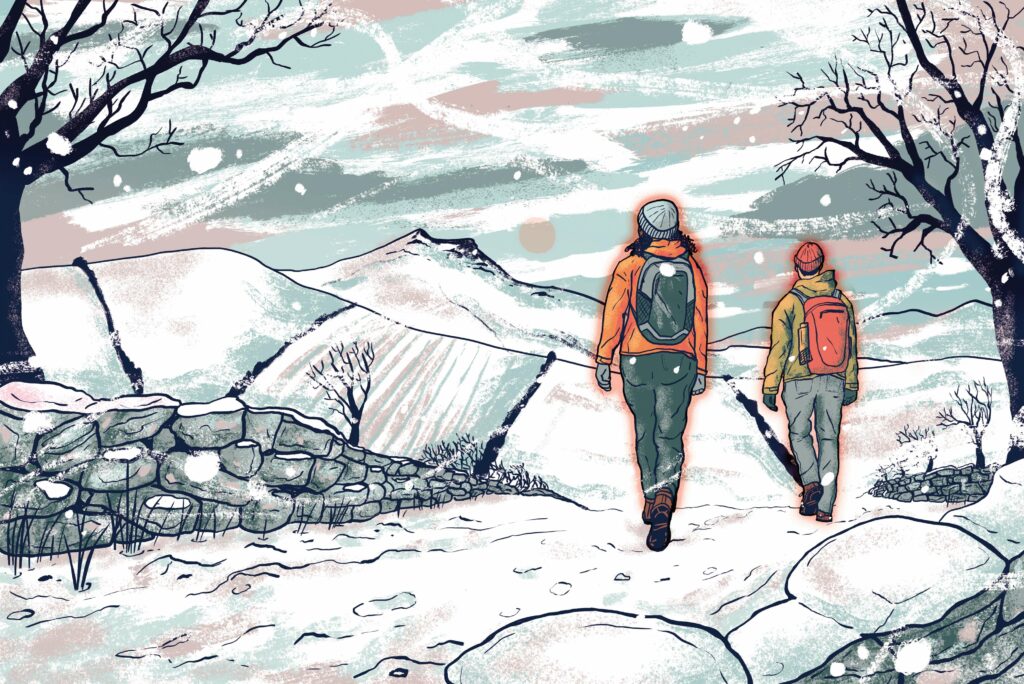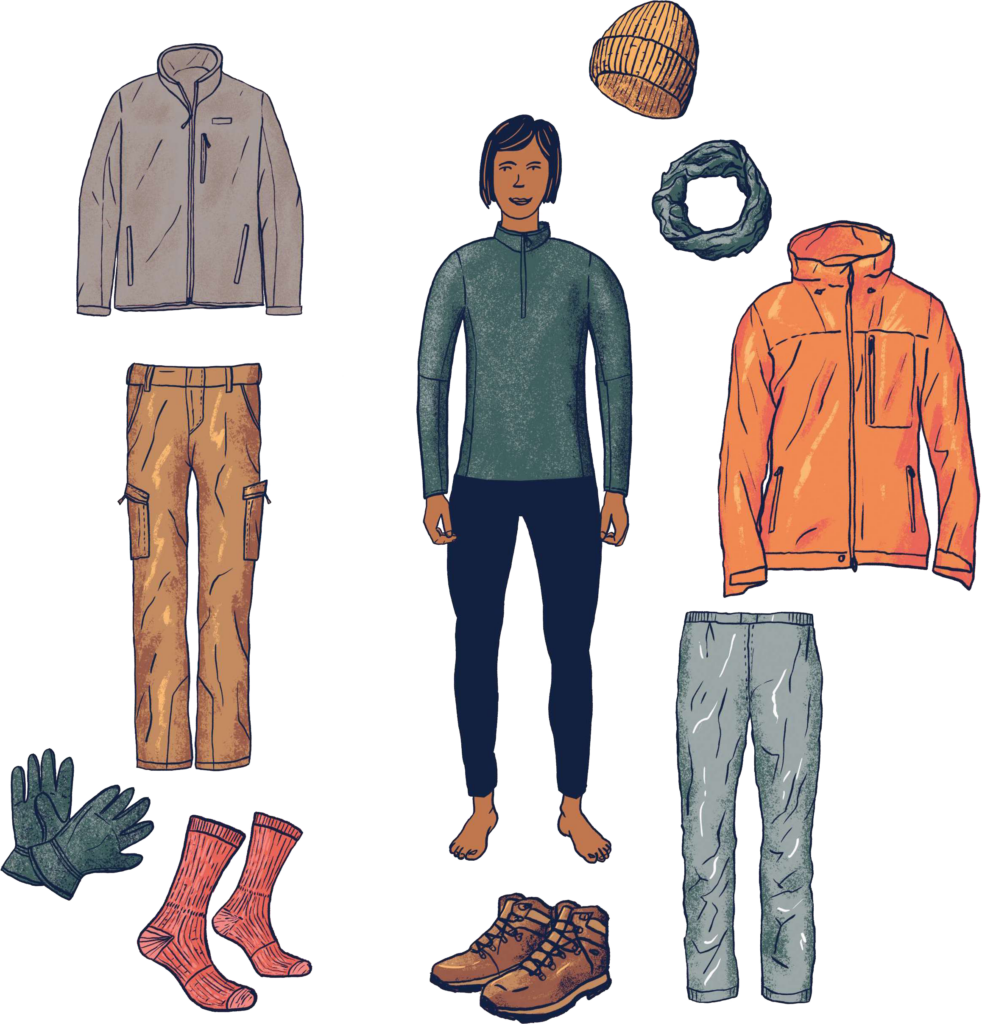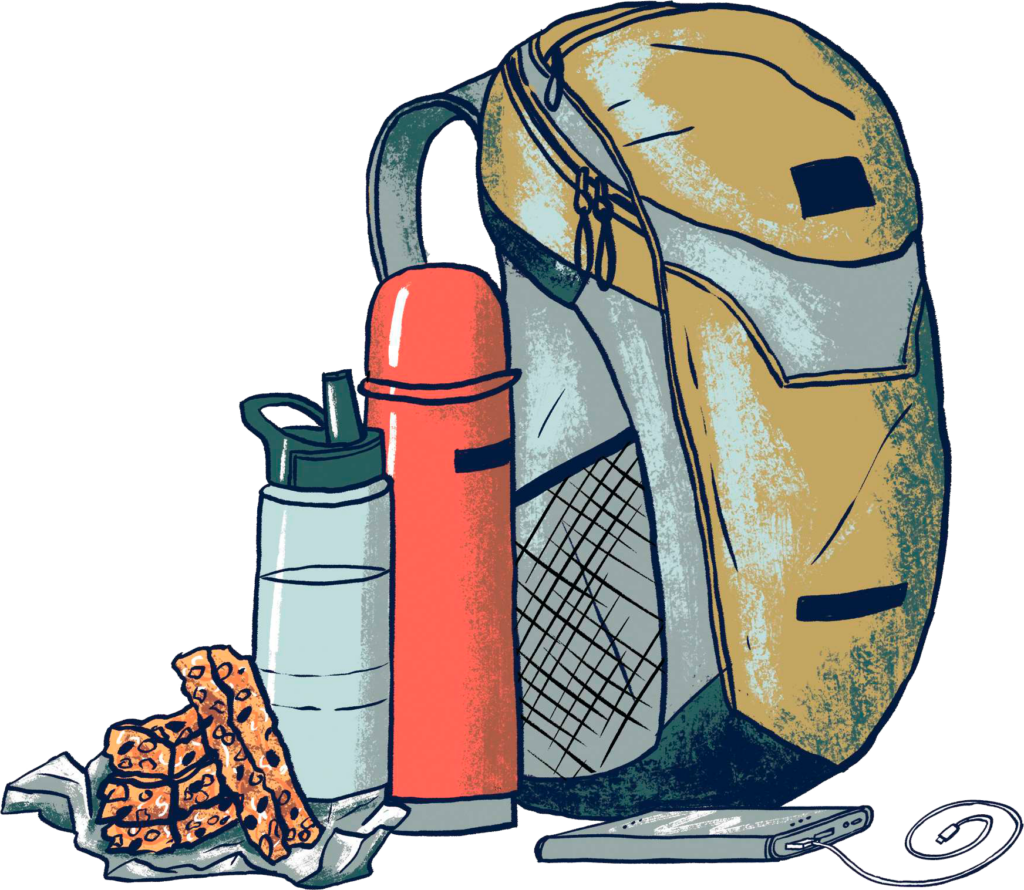
Walker’s guide to coping with cold
Rather than shivering in an under-heated home, why not get the blood pumping on an exhilarating walk? Dave Hamilton has tips on how to beat the chill on winter hikes
Winter is one of the most beautiful times of the year; early frosts coat the landscape like a dusting of icing sugar, the sky glows a brilliant, vivid blue and the air is fresh and invigorating. Wildlife can be scarce, but that only serves to make sightings a little more special. There’s nothing quite like catching a fleeting glimpse of a hare bounding through a layer of snow or spotting visiting winter birds, such as bramblings or the rarer waxwing.
Scientific studies show us there are physiological and psychological benefits of a winter’s walk too. Just 20 minutes a day can help lower blood pressure, stave off the winter blues and help strengthen ageing joints. Longer hikes, typically of an hour or more, heighten these benefits further.
This winter, with increasing energy prices, time away from home will make less of a demand on our now pricey central heating. During a good hike, you will generate your own heat and once you return home, the house will feel much warmer.
PLANNING AND SAFETY
A good ramble on a short day can feel like a real victory, but to ensure safety and success, a little bit of planning is often necessary.
• Set realistic distance goals within your level of fitness.
• Allow plenty of time.
• Always check the weather before you leave.
• Bring back-up maps and a compass, even when using a mobile device for navigation.
• Fully charge your phone.
• Solo walkers, let someone know where you are going and what time you plan to return.
SERIOUS HIKERS AND MOUNTAINEERS
Pack the extra equipment you might need for a winter hike, such as crampons or an ice axe. Remember, buying the kit doesn’t automatically qualify you to use it. If at all possible, walk with an expert or train up before you set out on an ambitious climb.
CLOTHES
There are three things to remember when dressing for the cold: layering, layering and layering. Multiple layers can be removed or added depending on the temperature, while one heavy layer on top, such as a thick jacket, can mean you are either too hot or too cold.

Base layer
Good base layers, such as thermal leggings or tights and a thermal long-sleeved top, will help wick sweat away from the body while trapping in a core layer of heat. The best base layers tend to be made from natural fibres – merino wool is a top performer, absorbing moisture more effectively than synthetic fibres or cotton.
Mid-layer: top
The mid layer is the clothing equivalent of loft or cavity insulation. It is worn to trap heat and prevent the cold from coming in. Good mid-layer options are fleeces or jumpers, but in extreme cold, you could think about donning a gilet or an insulated jacket.
Mid-layer: trousers
A good pair of breathable walking trousers is often the most straightforward choice. Jeans are a general no-no for hiking; denim is a strong woven cotton that retains moisture, adding extra weight while allowing the cold to creep in. A quick-drying or waterproof pair of trousers can be useful, as long as they allow moisture out. Wearing lined or insulated walking trousers means you can do without a thermal base layer.
Gloves
Cold fingers can ruin a walk, no matter how warm the rest of your body feels. On freezing days, gloves or mittens are essential. Ideally, invest in some windproof and water-resistant ones.
Socks
Go for merino and synthetic mix if budget allows. The synthetic fibres give a snug fit, preventing blisters, while the wool wicks moisture and insulates. For added comfort, consider a good thermal insole.
Hat
The claim that up to 50% of heat loss occurs through the head is a rural myth, but it’s still essential to keep your bonce cosy. Micro-fleece lined knitted hats are ideal. A bobble hat may fit awkwardly under your hood.
Snood or scarf
A scarf or tubular snood will prevent cold drafts creeping in over your collar and seal the heat inside your jacket, too.
Jacket
The outer layer is your main means of protection against harsh weather: wind, rain and snow. It should certainly be waterproof but also allow sweat to escape. If your midlayer is warm enough, then a thin, waterproof jacket may be all that is needed. However, if you plan to head out in freezing conditions, be sure to wear something suitably insulating.
Overtrousers
Waterproof trousers can fold down to almost nothing. Pop a pair in your backpack for those wintry showers.
Boots
Just walk through cold, wet grass and the ability of your boots to keep out water will soon be all too obvious! Should they fail this test, you may want to invest in a pair of reliable waterproof boots or apply an effective waterproof spray to your boots every winter. Like the rest of your clothing, be sure that your footwear is breathable.
THE BODY AND THE COLD
If you’ve ever worked in a large office, you will know we all feel the cold differently. There will be those who can happily walk around in short sleeves, while others will shiver under thick woolly layers. All kinds of factors are at play here. An individual’s amount of body fat can be an issue, as this has an insulating effect. Genes and our bodies’ ability to react to the cold are also factors. Older walkers do tend to feel the cold much more than younger ones, too, so bear this in mind if travelling with a mixed-aged group.
Over time, our bodies can adapt to a certain level of cold or heat. A group of walkers from Brighton will feel the cold much more on a Highland walk than an equivalent group from Inverness. Similarly, walkers used to cranking up the central heating at home will feel the cold much more than those used to a lower temperature indoors.
Although snow has its challenges, the worst winter weather to get stuck in is wind and rain. Water conducts heat better than air. The heat from our bodies is transferred to the wet clothes, the moisture and the heat evaporate into the atmosphere and we feel cold. Any wind will remove radiated heat, adding to our discomfort.
HYPOTHERMIA
With the exception of extreme events, such as falling into a frozen lake, hypothermia generally comes on gradually. Shivering can be the first sign, followed by slowness of breath, tiredness or confusion and cold, dry skin, often with blue lips. Watch for other warning signs, that are sometimes referred to as the ‘umbles’:
Mumbles and grumbles: Muttering or complaining, with speech becoming slurred.
Fumble and stumble: A person’s coordination suffers, they may drop things and stumble.
Tumble: Balance can be lost.
EXTRA DEFENCES

Flasks of soup, tea and hot chocolate
These can save the need to carry or light a burner. On longer hikes, you may also consider a flask of hot water and a pack of instant noodles.
Pack spare clothes
Even the best waterproof clothes can fail. For longer hikes, especially those overnight, keep a set of dry clothes in a waterproof bag. Wet clothes are a sure-fire ticket to hypothermia.
Food and drink
Arctic explorer Sir John Franklin (on whom the US TV drama The Terror was based) noted of his crew that: “No quantity of clothing would keep us warm while we fasted.” Not only does food give you the energy to cope with the cold, the process of breaking it down in the body actively keeps you warm. Try to eat little and often. Pack high-calorie foods that won’t freeze solid if temperatures plummet below zero.
Stay hydrated
In really freezing conditions, thin plastic bottles of water and bladders can freeze solid. So take water in an insulated bottle or thermos with a wide mouth, that is easy to open with gloved hands. Make sure your bottle won’t leak or crack.
Top mobile phone tip
Batteries drain very quickly in cold weather, which can be disastrous if you are relying on your phone for navigation. Bring a back-up power pack and keep your phone somewhere warm or pop it in an insulated sock (just not one you are wearing!).

Dave Hamilton is an outdoors writer and tutor who lives in Frome, Somerset.
The author of six books, including Wild Ruins, he also runs foraging courses. davehamilton.co.uk